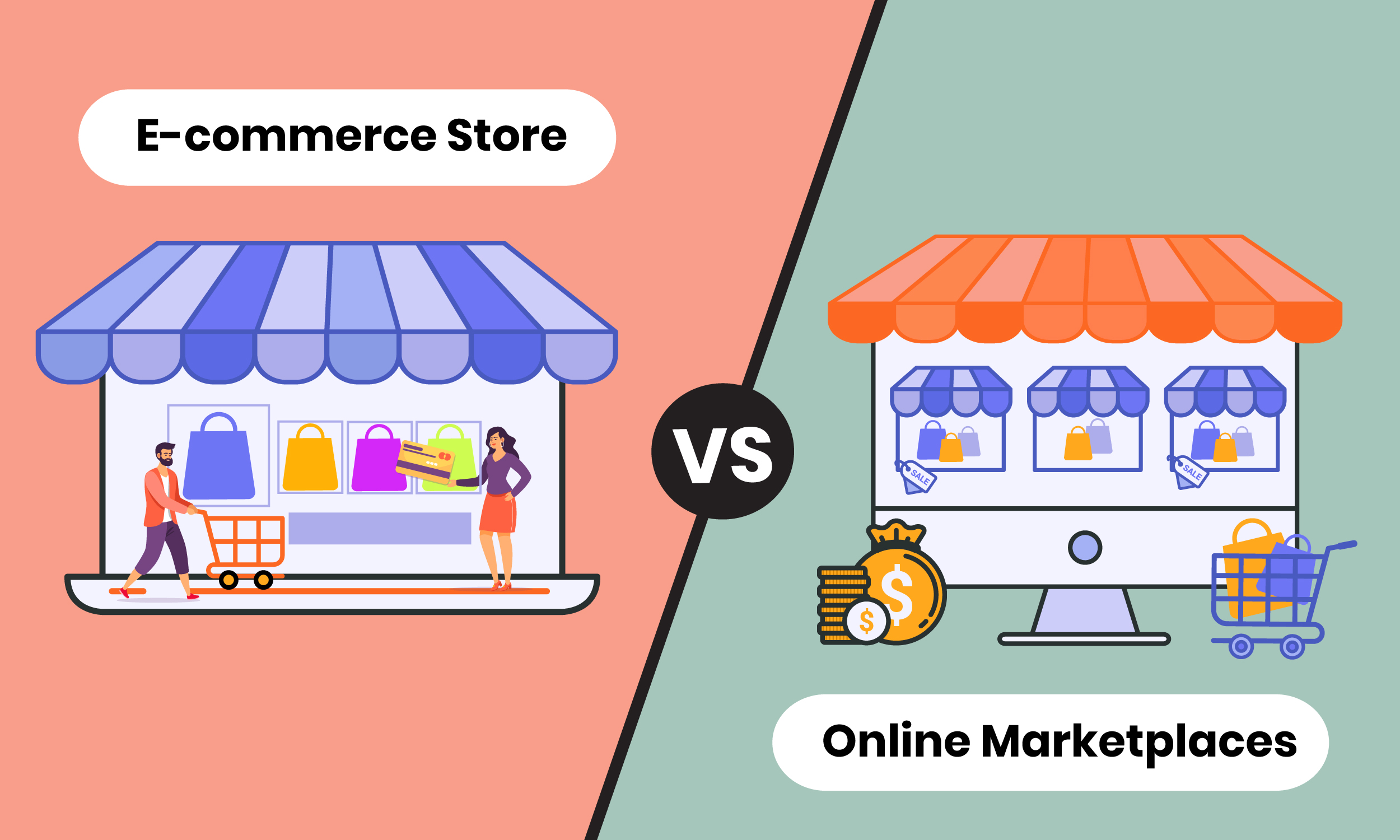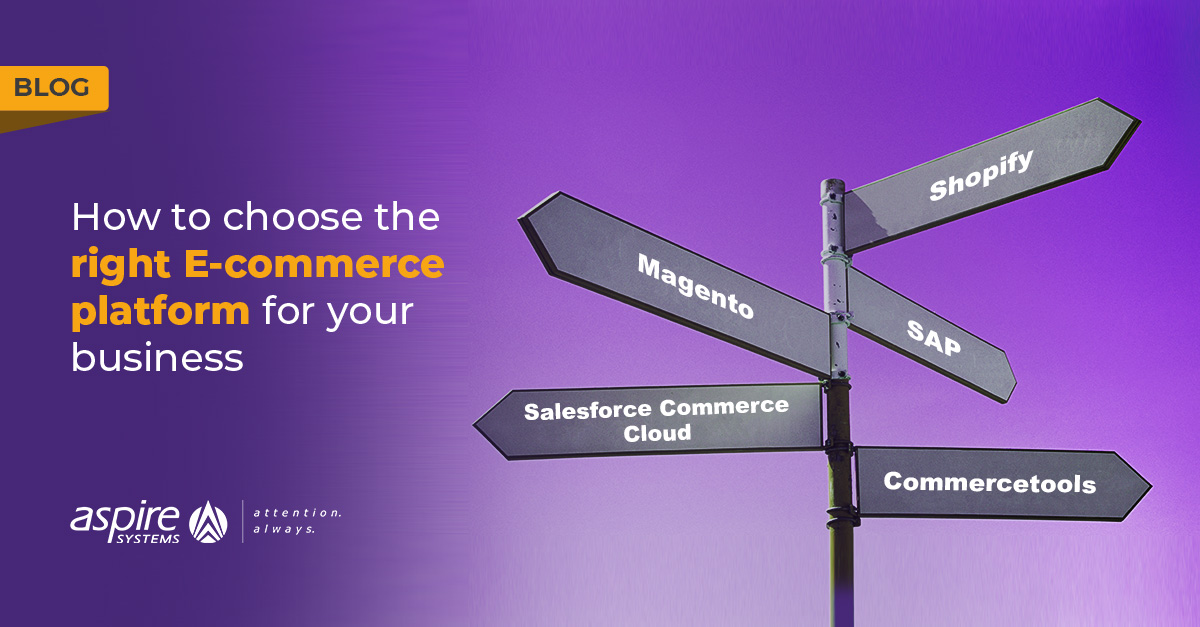e retail
:max_bytes(150000):strip_icc()/dotdash_Final_Electronic_Commerce_e-commerce_Jul_2020-175d8f54e6e44dd68f6d50b892eab8c0.jpg)
Introduction to E-Retail
E-retail, also known as electronic retail or online retail, has revolutionized the way people shop in the 21st century. With just a few clicks, consumers can now browse through a wide range of products and make purchases from the comfort of their own homes. This article will provide an overview of e-retail and highlight its advantages for both consumers and businesses.
Definition and Overview of E-Retail
E-retail is the process of selling products or services online through websites or mobile applications. It eliminates the need for physical stores or face-to-face interactions, allowing customers to shop at any time and from anywhere. E-retail encompasses various business models such as business-to-consumer (B2C) and consumer-to-consumer (C2C) transactions. It has become increasingly popular due to its convenience, accessibility, and wide range of available products.
Advantages of E-Retail
Convenience: One of the main advantages of e-retail is the convenience it offers. Consumers can browse and shop for products from the comfort of their own homes, avoiding long queues and crowded stores. They can make purchases at any time of the day or night, without being restricted by store opening hours.
Access to a wide range of products: E-retail provides consumers with access to a vast selection of products from all around the world. They can explore different brands and compare prices easily, enabling them to make informed purchasing decisions.
Lower prices: Online retailers often offer lower prices compared to physical stores. This is because they have lower overhead costs, such as rent and utilities. Additionally, consumers can take advantage of discount codes, sales, and promotions, resulting in cost savings.
Targeted marketing and personalization: E-retail allows businesses to gather data and insights about their customers’ preferences and shopping behaviors. This allows them to personalize marketing strategies and offer tailored product recommendations, enhancing the customer experience.
Global reach: With e-retail, businesses have the opportunity to reach customers worldwide, breaking geographical barriers and expanding their customer base.
In conclusion, e-retail has transformed the shopping experience by providing convenience, access to a wide range of products, lower prices, targeted marketing, and a global reach. As technology continues to advance, e-retail is projected to grow even further, shaping the future of retail.

Types of E-Retail Platforms
Online Marketplaces
Online marketplaces are platforms where multiple sellers can list and sell their products. These platforms bring together buyers and sellers from all around the world, creating a vast network of potential customers. Examples of online marketplaces include Amazon, eBay, and Alibaba.
By selling your products on online marketplaces, you can benefit from the already established traffic and user base of these platforms. This can potentially lead to increased visibility and sales for your business. Additionally, online marketplaces often provide tools and features to help sellers manage their inventory, track sales, and handle customer service.
E-Commerce Websites
E-commerce websites are standalone websites that are built specifically for selling products online. Unlike online marketplaces, e-commerce websites give businesses more control over their branding and customer experience. You can customize the design, layout, and functionality of your website to showcase your products and reflect your brand identity.
Setting up an e-commerce website allows you to establish a direct connection with your customers. You can build your brand, communicate your unique value proposition, and provide a seamless shopping experience. E-commerce platforms like Shopify, WooCommerce, and Magento offer user-friendly solutions for creating and managing your online store.
Social Media Selling Platforms
Social media selling platforms are becoming increasingly popular for e-retailers. These platforms, such as Facebook Marketplace and Instagram Shopping, enable businesses to sell products directly through their social media profiles. This integration allows customers to discover and purchase products without leaving their favorite social media platforms.
By leveraging social media selling platforms, you can tap into the large user bases of popular social media networks. You can showcase your products through visually appealing images and videos, engage with potential customers through comments and direct messages, and even run targeted advertising campaigns.
In summary, the three main types of e-retail platforms are online marketplaces, e-commerce websites, and social media selling platforms. Each type offers unique advantages and opportunities for businesses to reach and engage with their target audience. Whether you choose to sell on established marketplaces, build your own e-commerce website, or utilize social media platforms, e-retail provides a powerful avenue for reaching customers and growing your business.

Key Features and Benefits of E-Retail
Convenient Shopping Experience
Shopping has never been easier than with e-retail. Customers can now browse and purchase products from the comfort of their own homes, anytime and anywhere. With just a few clicks, they can compare prices, read reviews, and make secure transactions. E-retail eliminates the need to visit physical stores, saving time and effort.
Wide Variety of Products
One of the biggest advantages of e-retail is the vast selection of products available. Online stores can carry more inventory compared to traditional brick-and-mortar stores, offering customers a wide range of options. From clothing and accessories to electronics and home goods, there is something for everyone. Additionally, e-retail allows customers to access international brands and products that may not be available locally.
Competitive Pricing
E-retailers often offer competitive pricing due to lower overhead costs. Without the need for physical storefronts and expensive rental spaces, e-retailers can pass on their savings to customers. Additionally, customers can easily compare prices across various online stores, ensuring they get the best deal possible. Special promotions, discounts, and loyalty programs are also common in e-retail, providing additional savings for shoppers.
In conclusion, e-retail offers a convenient shopping experience, a wide variety of products, and competitive pricing. Whether you’re looking to purchase clothing, electronics, or anything in between, e-retail provides a seamless online shopping experience. So sit back, relax, and start exploring the world of e-retail from the comfort of your own home. Happy shopping!

Building an E-Retail Business
Choosing the Right Platform
When it comes to building an e-retail business, one of the most crucial decisions is choosing the right platform. It’s important to select an e-commerce platform that aligns with your business goals and offers the features you need. Consider factors such as ease of use, customization options, scalability, and integration capabilities. Popular e-commerce platforms like Shopify, WooCommerce, and Magento offer a range of features and support that can help you launch and grow your online store.
Creating an Attractive Online Store
In the world of e-retail, first impressions matter. To attract customers and drive sales, it’s essential to create an attractive and user-friendly online store. Start by designing a clean and visually appealing website that reflects your brand identity. Use high-quality product images and provide detailed descriptions to give customers a clear understanding of what you’re selling. Make sure your website is easy to navigate and optimize it for mobile devices, as more and more consumers are shopping on their smartphones and tablets. Additionally, consider incorporating customer reviews and ratings to build trust and credibility.
Implementing Secure Payment Systems
Security is a top concern for online shoppers, and implementing secure payment systems is crucial for building trust and encouraging customers to make purchases. Choose a reliable payment gateway that offers encryption and fraud protection to safeguard customer information. Popular options include PayPal, Stripe, and Authorize.Net. Display trust seals and SSL certificates prominently on your website to reassure customers that their transactions are safe and secure. Providing multiple payment options, such as credit cards, digital wallets, or installment plans, can also help improve the shopping experience and increase conversions.
In conclusion, building a successful e-retail business requires careful consideration of various factors. By choosing the right platform, creating an attractive online store, and implementing secure payment systems, you can establish a strong online presence and provide a seamless shopping experience for your customers. Remember to regularly update your website, monitor customer feedback, and adapt to changing trends to stay competitive in the ever-evolving e-retail landscape.

E-Retail Marketing Strategies
Search Engine Optimization
To succeed in the competitive world of e-commerce, e-retailers must prioritize search engine optimization (SEO) strategies. By optimizing their websites and product pages for search engines like Google, e-retailers can increase visibility and attract more organic traffic. This involves conducting keyword research to understand what terms customers are using to search for products. E-retailers should then incorporate these keywords into their website content, meta tags, and product descriptions. Additionally, implementing a strong link-building strategy can improve search engine rankings and drive more traffic to the e-retail site.
Social Media Marketing
Social media platforms have become powerful tools for e-retailers to reach their target audience. By creating engaging content and building a strong social media presence, e-retailers can increase brand awareness, drive traffic to their website, and generate sales. It’s important for e-retailers to identify the social media platforms that their target audience frequents the most and create tailored content for each platform. Engaging with customers and influencers on social media can also help e-retailers build relationships and gain credibility in their industry.
Email Marketing
Email marketing remains one of the most effective strategies for e-retailers to connect with their customers and encourage repeat purchases. By building an email list of interested customers and sending targeted newsletters and promotions, e-retailers can keep their brand top of mind and drive sales. It’s important for e-retailers to segment their email list based on customer preferences and purchase behavior to ensure that they are sending relevant content. Personalizing emails, including product recommendations based on previous purchases, can also increase customer engagement and conversions.
Overall, implementing a combination of SEO, social media marketing, and email marketing strategies can help e-retailers effectively promote their products and attract customers in the competitive online marketplace. By staying up to date with the latest trends and constantly refining their strategies, e-retailers can stay ahead of the competition and drive success in the e-commerce industry.

E-Retail Fulfillment and Logistics
Whether you are a startup or an established retailer, e-retail has become an essential part of the business landscape. However, successfully navigating the world of e-commerce requires efficient fulfillment and logistics processes.
Warehousing and Inventory Management
One of the primary challenges for e-retailers is managing inventory and warehousing. It is crucial to have a well-organized system that allows for efficient tracking, storage, and retrieval of products. This ensures that you have the right products in stock and can fulfill orders promptly. Implementing an effective inventory management system is key to avoiding stockouts, reducing excess stock, and maximizing profitability.
Order Processing and Shipping
Once an order is placed, the e-retailer needs to have a streamlined order processing and shipping system in place. This includes accurately picking and packing orders, generating shipping labels, and coordinating with shipping carriers. Timely and efficient order fulfillment is crucial for customer satisfaction and loyalty. It is also important to offer shipment tracking and provide regular updates to customers.
Returns and Customer Service
Returns are an inevitable part of e-retail. Establishing a seamless and hassle-free returns process is essential. A customer-centric approach to returns can help build trust and loyalty among your customer base. Promptly processing returns, offering hassle-free return policies, and providing excellent customer service are crucial elements of an e-retail operation.
By investing in effective e-retail fulfillment and logistics strategies, businesses can benefit from improved customer satisfaction, increased brand loyalty, and enhanced operational efficiency.
Here’s a summary of the key points regarding e-retail fulfillment and logistics:
| Key Point | Explanation |
|---|---|
| Warehousing and Inventory Management | – Efficient tracking, storage, and retrieval of products to ensure the right products are in stock. – Implementing effective inventory management systems to avoid stockouts and excess stock. |
| Order Processing and Shipping | – Streamlined systems for accurate order picking, packing, and shipping. – Coordinating with shipping carriers and providing shipment tracking for customer satisfaction. |
| Returns and Customer Service | – Establishing a seamless and hassle-free returns process. – Offering customer-centric return policies to build trust and loyalty. – Providing excellent customer service to enhance the overall e-commerce experience. |
By effectively managing e-retail fulfillment and logistics, businesses can establish a strong online presence, gain a competitive edge, and succeed in the ever-evolving world of e-commerce.

E-Retail Challenges and Solutions
Cybersecurity and Data Protection
In the fast-paced world of e-retail, one of the biggest challenges businesses face is ensuring cybersecurity and data protection. With a rising number of cyber threats and data breaches, customers are becoming increasingly concerned about the security of their personal information. To address this challenge, e-retailers must prioritize the implementation of robust security measures.
- Secure Payment Gateways: E-retailers should ensure that they have secure payment gateways that protect customers’ financial information. This can be achieved by using encryption technologies and complying with industry standards such as Payment Card Industry Data Security Standard (PCI DSS).
- Regular Security Audits: E-retailers should conduct regular security audits to identify vulnerabilities and take proactive measures to address any weaknesses. This includes monitoring and updating systems, implementing strong access controls, and training employees on best security practices.
Technological Infrastructure
Another challenge for e-retailers is maintaining a robust technological infrastructure that can support the demands of online shopping. Here are some solutions to address this challenge:
- Scalable E-commerce Platforms: E-retailers should invest in scalable e-commerce platforms that can handle high volumes of traffic and transactions. This ensures a seamless shopping experience for customers, even during peak periods.
- Responsive Website Design: E-retailers should optimize their websites for mobile devices to cater to the growing number of customers who prefer shopping on smartphones and tablets. Responsive design ensures that the website adjusts to different screen sizes and provides a user-friendly experience.
- Inventory Management Systems: Efficient inventory management is crucial for e-retailers to accurately track stock levels, avoid overselling, and provide timely and accurate product information to customers. Implementing robust inventory management systems can streamline the fulfillment process and enhance customer satisfaction.
In the competitive world of e-retail, addressing challenges such as cybersecurity and data protection, and having a strong technological infrastructure is essential for success. By prioritizing these areas, e-retailers can build trust with customers, enhance their shopping experience, and stay ahead of the competition.
E-retail is the sale of goods and services over the internet. It is a subset of e-commerce, which also includes business-to-business (B2B) and consumer-to-consumer (C2C) transactions. E-retail is typically focused on business-to-consumer (B2C) sales, where businesses sell directly to consumers.
E-retail has become increasingly popular in recent years, as more and more people shop online. The convenience of being able to shop from anywhere at any time is a major appeal of e-retail. Additionally, e-retailers often offer competitive prices and a wide selection of products.
Some of the most popular e-retailers include Amazon, eBay, Walmart, and Target. These retailers offer a wide variety of products, from electronics and appliances to clothing and home goods.
E-retail is a rapidly growing industry, and it is expected to continue to grow in the coming years. As more and more people shop online, e-retailers will need to continue to innovate and offer new features and services in order to stay ahead of the competition.
Here are some of the benefits of e-retail for both consumers and businesses:
Benefits for consumers:
- Convenience: Consumers can shop from anywhere at any time, without having to leave their homes.
- Wide selection: E-retailers typically offer a wider selection of products than traditional brick-and-mortar stores.
- Competitive prices: E-retailers often have lower prices than traditional brick-and-mortar stores.
- Easy price comparison: Consumers can easily compare prices from different e-retailers before making a purchase.
- Read reviews: Consumers can read reviews of products and services from other customers before making a purchase.
Benefits for businesses:
- Global reach: E-retailers can sell their products and services to consumers all over the world.
- Lower costs: E-retailers typically have lower costs than traditional brick-and-mortar stores, such as rent and utilities.
- Increased sales: E-retailers can often reach a wider audience and sell more products than traditional brick-and-mortar stores.
- Valuable data: E-retailers can collect valuable data about their customers, such as purchase history and browsing habits. This data can be used to improve the customer experience and increase sales.
Overall, e-retail is a convenient and affordable way for consumers to shop, and it is a growing opportunity for businesses.
